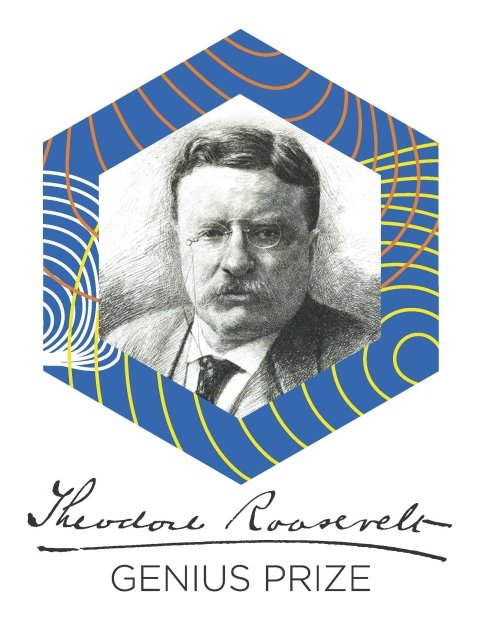From an invasive reptile trapping system to a nucleic acid barcode that identifies poached and trafficked wildlife products anywhere in the world, the U.S. Fish and Wildlife Service’s Theodore Roosevelt (TR) Genius Prize winners and their technological innovations will help address conservation challenges and opportunities and engage new communities and diverse ideas. The six prize competitions encourage technological innovation that advances the Service’s mission by preventing wildlife poaching and trafficking, promoting wildlife conservation, managing invasive species, protecting endangered species, reducing human-wildlife conflict with nonlethal methods, and reducing human-predator conflict. Each of the 2022 prize winners will receive between $50,000 to $100,000 for their winning innovation submission, totaling $550,000 for the 2022 prize competition.
“As the Service addresses numerous conservation challenges, the 2022 Theodore Roosevelt Genius Prize Competition and future competitions will build a community of innovators with a wide variety of skill sets and perspectives to collaboratively advance resource stewardship,” said Service Director Martha Williams. “These competitions support the larger goals of the America the Beautiful initiative and work being done under the Bipartisan Infrastructure Law. Both efforts underscore the Biden-Harris administration’s all-of-government approach to bolstering climate resilience and protecting natural areas for current and future generations.”
The TR Genius Prize Competitions were established under the John D. Dingell Jr. Conservation, Management, and Recreation Act to award prizes annually and expand opportunities for new partners and networks to share ideas, catalyze new solutions, and spark conservation collaboration across the nation.
The 2022 TR Genius Prize Competition category winners:
Preventing Wildlife Poaching and Trafficking: The NABIT- Rapid, portable genetic testing tool for combating wildlife trafficking by Conservation X Labs and the Thylacine Biosciences Team
Conservation X Labs developed the NABIT, a portable battery-powered system, to rapidly perform a simple genetic test to identify suspected illegal or trafficked wildlife products. Providing rapid results gives enforcement officers and conservations partners a cutting-edge tool to detect illegal wildlife products, including meat and other tissues that are often difficult to identify.
Promotion of Wildlife Conservation: Harnessing Machine Learning to Connect Urban Residents to Wildlife Conservation through Social Media by Jason Holmberg, Executive Director, Wild Me, in collaboration with Lincoln Park Zoo’s Seth Magle, Executive Director, Urban Wildlife Information Network
This project harnesses machine learning to connect urban residents to wildlife conservation through social media to create a deeper connection to conservation. Using artificial intelligence software to identify media content and social media posts about urban wildlife, the innovation aims to collect important ecological data and create dialogue between users and scientists via their posts.
Protecting Endangered Species: Expanding the Use of Photo-Identification Technology to Include Tiny, Flying and Ephemeral species by Jenny Shrum
This innovation aims to expand the use of photo-identification technology to the individual insect level and use photo identification to fill information gaps for rare butterflies, such as the island marble butterfly. Advances in digital cameras, data-base processing and artificial intelligence software can expand our knowledge of individual insects and populations for management and conservation.
Managing Invasive Species: A Smart-Trapping System for the Live Capture and Monitoring of Invasive Reptiles by Ben Stookey and Derek Yorks, co-founders of Wild Vision Systems
This innovation presents a live-trapping system and data platform that uses artificial intelligence to identify and capture invasive snakes and lizards in a stationary robotic trap. The design could enable scalable, cost-effective and sustained deployment of smart-trap networks for effective control and monitoring of invasive species.
Promoting Nonlethal Human-Wildlife Conflict: Creating a No-Fly Zone for Nuisance Birds by Boarman, Boarman and Shields through Hardshell Labs
This innovation aims to improve laser repulsion of nuisance birds by using species-specific responses to different colored lasers and flash patterns. Plans for the innovation could include systematizing the use of lasers to provide efficient protection of sensitive species habitat and nesting grounds, agricultural resources, electrical infrastructure and waste treatment facilities.
Reducing Human-Predator Conflict Using Nonlethal Means: Cattle-Producer Designed Automated Mineral Bin by Cameron Krebs
The innovation’s Automated Mineral Bin is a strategy for reducing human-predator conflict that combines standard livestock handling practices with robotic technology. Created by a fifth-generation Oregon sheep and cattle rancher, the project leverages the natural defensive behaviors of cattle and is easy for producers to implement. The project uses an automated salt bin to herd livestock into larger groups, reducing the risk of predation by large predators.
The Service partnered with the National Fish and Wildlife Foundation to help administer the prize competition. The competition was also guided by the Theodore Roosevelt Genius Prize Boards. These boards are responsible for selecting topics and issuing problem statements, and they advise the winners of any opportunities regarding development and implementation of the solutions.
The competition received a total of 104 submissions that were evaluated by 31 judges. The Theodore Roosevelt Genius Prize Advisory Council, managed in accordance with the Federal Advisory Committee Act, will hold a public meeting Oct. 4-6, 2022, to hear presentations on the six winners and consider any recommendations for the Secretary of the Interior about potential opportunities for technological innovations related to the winning proposals.
The U.S. Fish and Wildlife Service works with others to conserve, protect and enhance fish, wildlife, plants and their habitats for the continuing benefit of the American people. For more information, visit www.fws.gov and connect with us on social media: Facebook, Instagram, Twitter, LinkedIn, Flickr, and YouTube.





